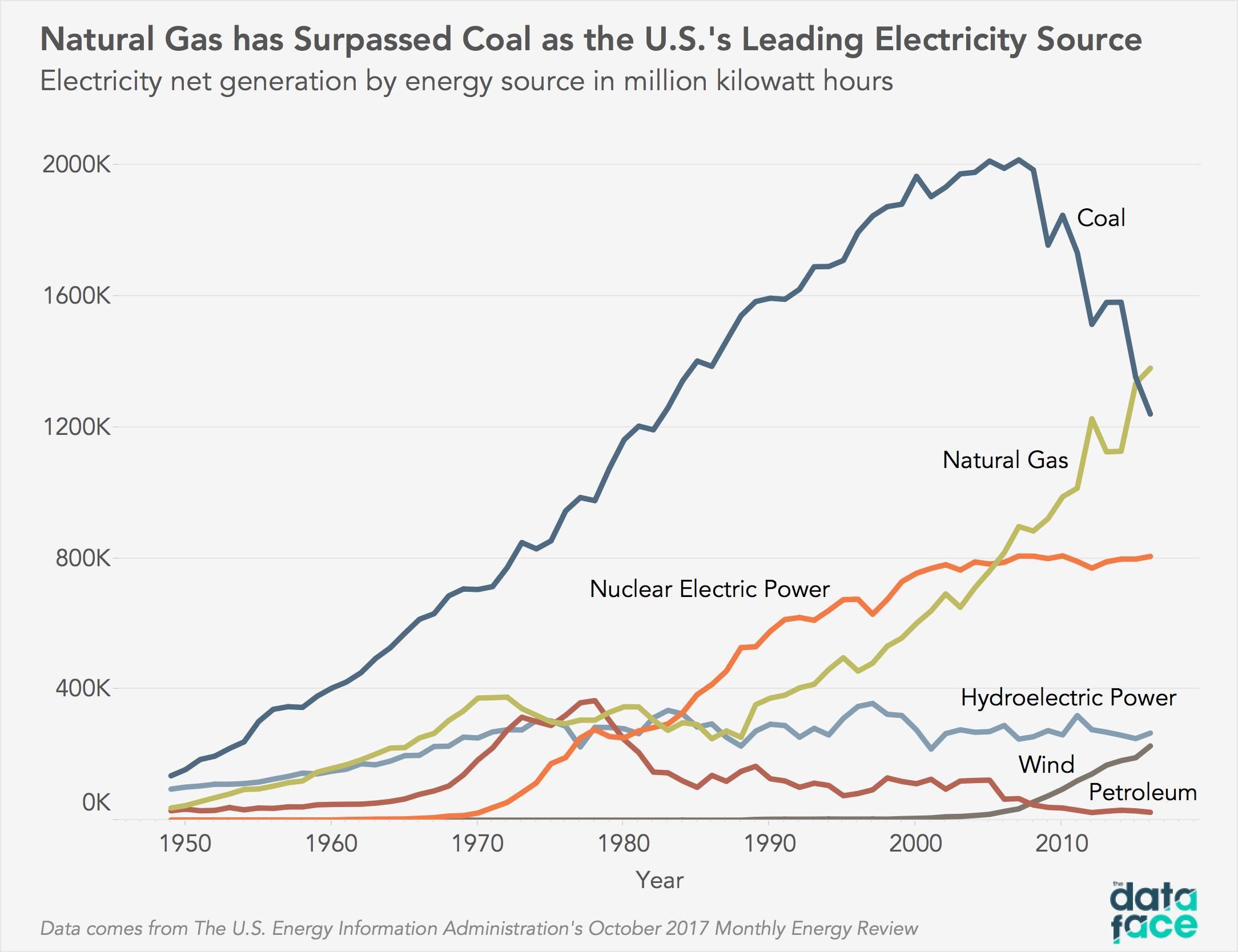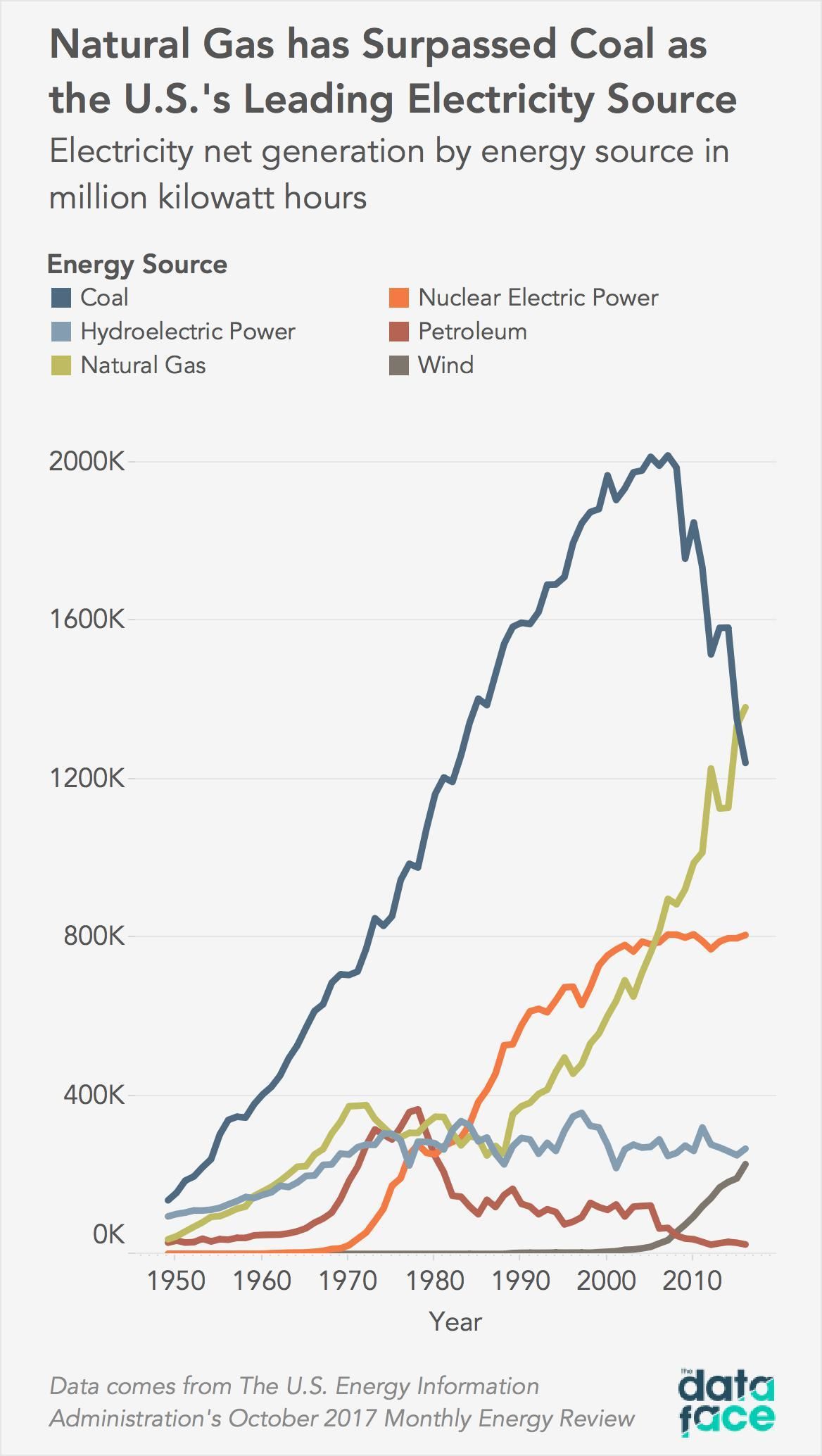

The 2017 UN Climate Change Conference kicks off today in Bonn, Germany and attendees have plenty to talk about. The latest global warming estimates suggest that, without a major intervention, global temperatures will likely rise three degrees Celsius above pre-industrial levels by 2100. The goal of the Paris Climate Agreement -- to keep warming under two degrees Celsius -- seems to be slipping out of reach.
So is the United States doing its part to curb the trend?
Well, sort of. As of 2016, natural gas has overtaken coal as America's primary source of electricity. Natural gas has produced 54% more kilowatt hours of electricity since 2007, while electricity attributable to coal has declined 39% over the same timeframe.
From an environmental perspective, this is generally regarded as a good thing. Research suggests that burning natural gas produces about 50% less carbon dioxide than coal per unit of energy.
Still, natural gas is not without its faults. Its production can lead to the release of methane into the atmosphere, a greenhouse gas that is about 25 times better at holding in the Earth's heat than CO2. There is some dispute about the rate at which methane is leaking, but this at least partially undercuts the argument that natural gas is staunchly better than coal for the environment.
Other major takeaways from the graphic:
- Between 1976 - 1978, petroleum was the second largest source of electricity in the United States. Since then, the number of kilowatt hours generated by petroleum has declined 93%. It now accounts for less than 1% of electricity net generation nationwide.
- Wind is no longer irrelevant as an electricity source, accounting for 6% of net electricity generation in 2016. Net electricity attributable to wind has jumped more than 40x since 2000.
- Both nuclear electric power and conventional hydroelectric power as electricity sources have stayed relatively stagnant over the last decade.
Even as our sources of electricity generation become slightly greener, we're still largely dependent on fossil fuels (i.e. coal, natural gas, and petroleum). Renewable energy sources accounted for only 12.5% of electricity generation in 2016. To make a real dent in global warming, we'll need to shift our appetite much more towards renewables.
Nerd Notes:
Graphic was created in Tableau.
Data comes from The U.S. Energy Information Administration's October 2017 Monthly Energy Review. You can go here to check out the report itself or view a tidier version of the relevant data on data.world.



